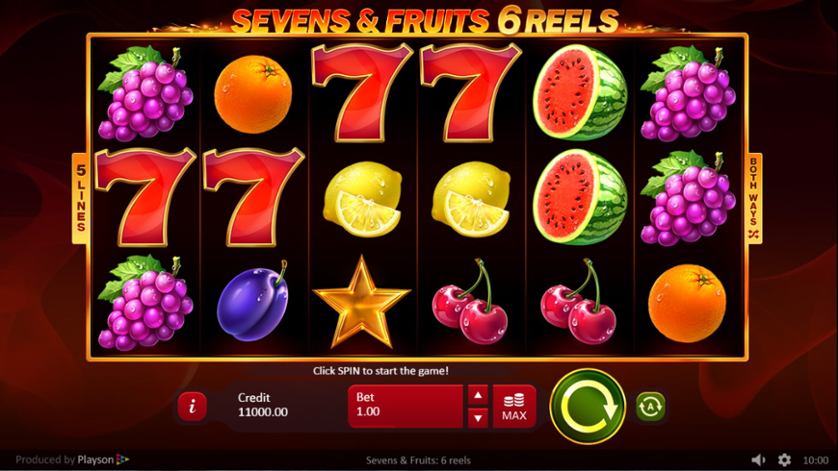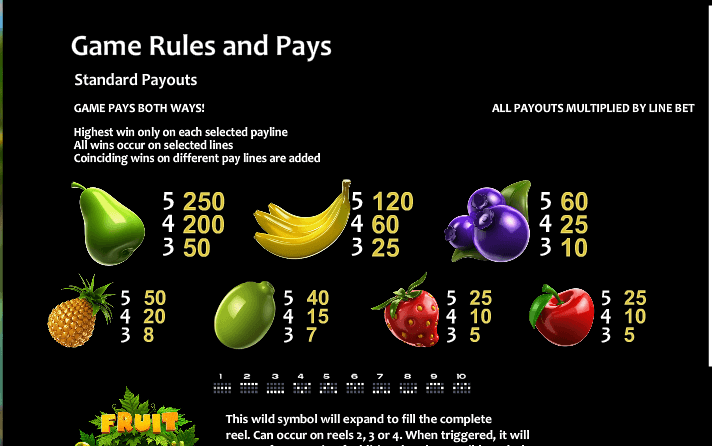Fruit Reels
Posted : admin On 7/24/2022A slot machine informally known as fruit machine or puggy or slots or poker machine is a casino gambling machine with three or more reels which spin when a button is pushed. Slot machines are also known as one-armed bandits because they were originally operated by one lever on the side of the machine as distinct from a button on the front pane. Looking for fruit recipes? Allrecipes has more than 16,470 trusted fruit recipes complete with ratings, reviews and serving tips.
17 K de aprecieri. Sign up and receive FREE € 5,00 + scratch at Fruityreels. Claim your free cash now, visit www.fruityreels.com. Jun 21, 2013 This casino has a unique soft and you get first 5 euro bonus when you register. Everything over 10 euro you can withdraw to your bank account. And they give almost every week free 2 euro money.I have not made any withdrawns, because I play all those money away, but I heard that some has made with.
We are very pleased you found us! Quality-Casinos.com is always trying to provide you the most recent casino news, bonuses and many more. The Quality-Casinos.com Testteam is also trying to make you the most detailed and informative online casino reviews. Besides that we don’t want you to play at Casino Scams, that’s why we only publish the most reliable, safe and secure online casinos. We created a Casino Top 100, which you can find in the overview below. We also added exclusive bonuses which can be redeemed in combination with your visit at Quality-Casinos.com.
Casino Top 100
Quality-Casinos.com – independent and honest
Fruit Reels

Quality-Casinos.comis your virtual betting guide when it comes to everything that has to do with online casinos.
We test, compare and review online casinos and online slots. We test everything ourselves and always with real money. We are convinced that that is the only right way to give you honest, reliable and independent information. In other words, we are 100% behind every online casino that we recommend. If that’s right, then we say that. And if something is not right or is disadvantageous for you as a player, we also say so. Do not you agree on something? Then we would like to hear it. Is a comment correct or is information not up-to-date? Then we will adjust a review.


Independent, tested and fair
We lead you to reliable online casinos. Casinos that pay nicely and do this quickly. Online casinos that only use independent, tested and fair software. Online casinos with a friendly and expert helpdesk, who help you well and do not send them from the box to the wall. But also: online casinos with clear conditions, without snags in the grass. We want you to feel good at every online casino that we recommend.
Fishing Reels Amazon.com
But we do more. We give you game tips and strategies – so that you become a better gambler. We review the latest slot machines for you – so that you know exactly what is hot and what is not. And we will keep you informed of the latest bonuses and promotions – so you do not have to miss anything.

Peel, also known as rind or skin, is the outer protective layer of a fruit or vegetable which can be peeled off. The rind is usually the botanicalexocarp, but the term exocarp also includes the hard cases of nuts, which are not named peels since they are not peeled off by hand or peeler, but rather shells because of their hardness.
A fruit with a thick peel, such as a citrus fruit, is called a hesperidium. In hesperidia, the inner layer (also called albedo or, among non-botanists, pith)[1] is peeled off together with the outer layer (called flavedo), and together they are called the peel. The flavedo and albedo, respectively, are the exocarp and the mesocarp. The juicy layer inside the peel (containing the seeds) is the endocarp.
Uses[edit]
Depending on the thickness and taste, fruit peel is sometimes eaten as part of the fruit, such as with apples. In some cases the peel is unpleasant or inedible, in which case it is removed and discarded, such as with bananas or grapefruits.
The peel of some fruits — for example, pomegranates — is high in tannins and other polyphenols, and is employed in the production of dyes.
The peel of citrus fruits is bitter and generally not eaten raw, but may be used in cooking; although not flammable. In gastronomy, the outermost, colored part of the peel is called the zest, which can be scraped off and used for its tangy flavor. A large piece of citrus peel, called a 'twist', is often used to garnish cocktails. The fleshy white part of the peel, bitter when raw in most species, is used as succade or is prepared with sugar to make marmalade or fruit soup. The peel can also be candied, or dried to produce a seasoning (e.g. chenpi).
Nutrition[edit]

In a 100 gram reference amount, raw orange peel supplies 97 calories, with dietary fiber and vitamin C in rich content having 42% and 227% of the Daily Value (DV), respectively.[2]Calcium content is 16% of the DV, with no other micronutrients in significant amounts.[2] A 1 ounce (28 g) serving of raw orange peel provides 63% DV for vitamin C and 12% DV for dietary fiber.[2]
See also[edit]
- Biorefinery: conversion of citrus peel to succinic acid
- Fruit anatomy, describing the botanical terms of fruit and skin layers
References[edit]
- ^'pith'. Oxford English Dictionary.
- ^ abc'Orange peel, raw'. Nutritiondata.com, Conde Nast from the USDA National Nutrient Database, version SR-21. 2018. Retrieved 22 June 2019.